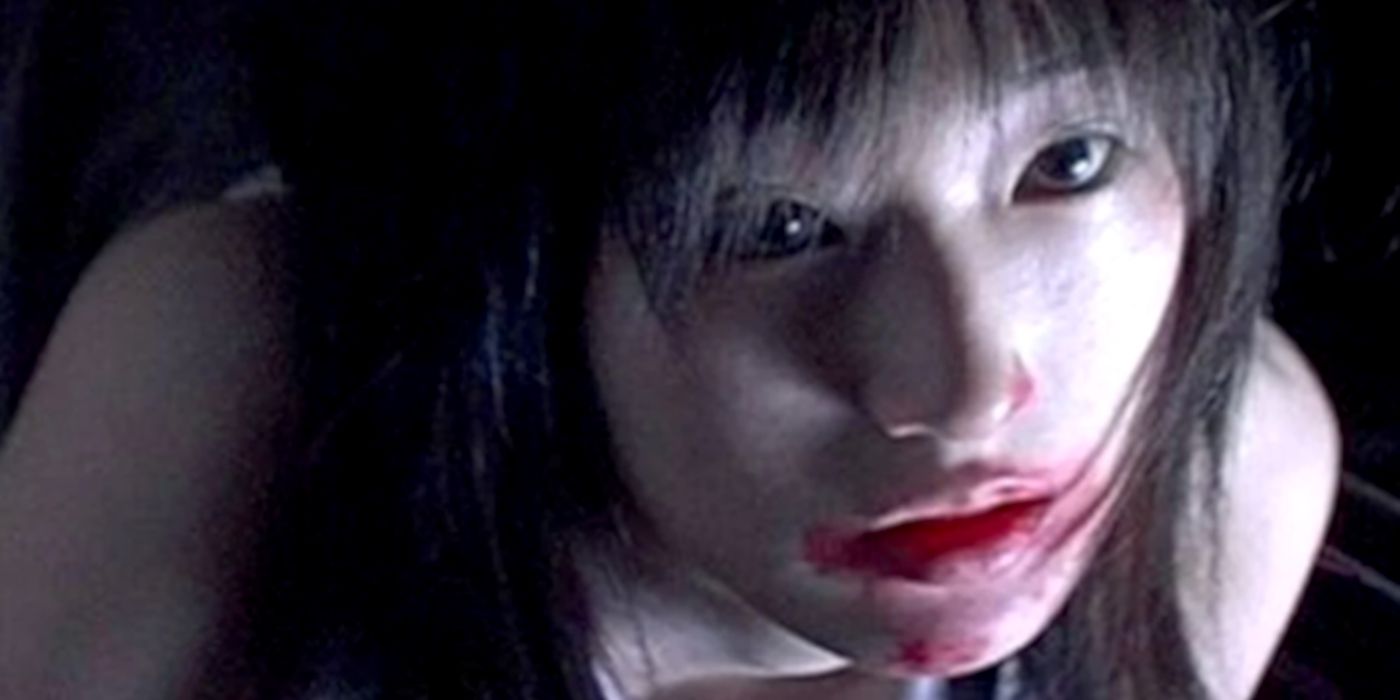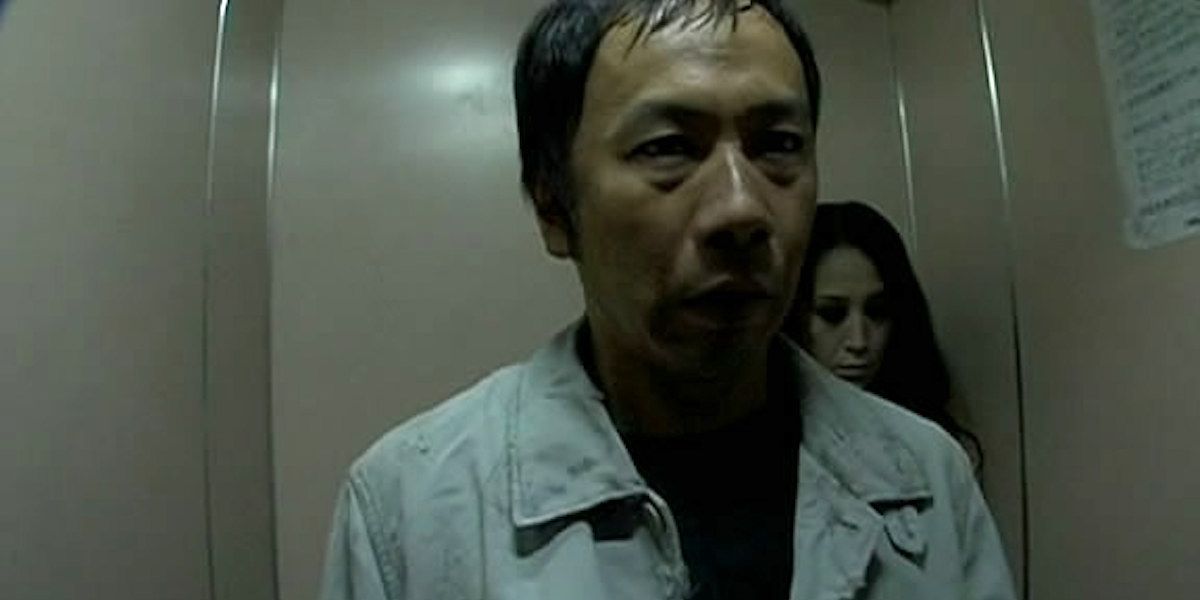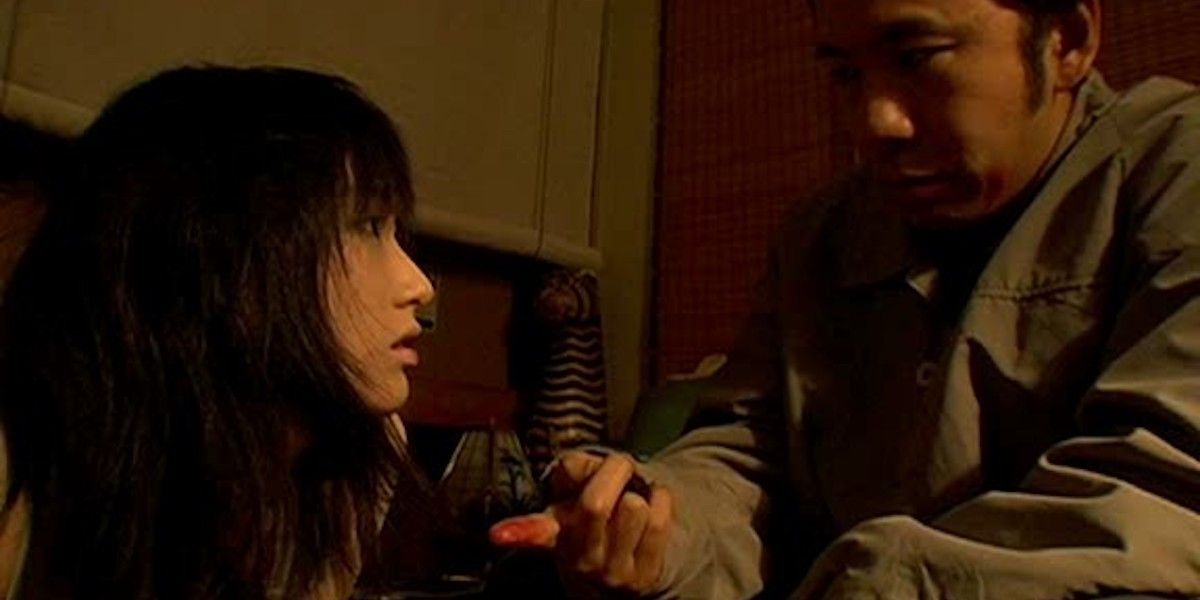In between shooting his two biggest movies Ju-on: The Grudge and its American remake The Grudge, Japanese director Takashi Shimizu made Marebito. Eight days was all it took him to shoot, but he crafted arguably the best film of his career. Influential filmmaker Shinya Tsukomoto stars in the lead role as Takuyoshi Masuoka, a freelance photographer who captures a terrified man’s graphic suicide on film, and becomes obsessed with capturing that same level of fear again. This obsession leads him down a disturbing path in which shocking discoveries are made. Adapted from Chiaki Konaka’s novel, Shimizu was influenced by the works of H. P. Lovecraft to make this a profoundly unique horror film. At its core, the movie is a character study of Masuoka, and Shimizu sticks to him for the entirety of the running time. It is rare for a horror movie to flesh out its lead character to the fullest extent, but Marebito takes audiences on a perplexing and slow journey into the unhinged mindset of Masuoka.
Although he is a man of few words, Masuoka’s mind is frequently racing and the audience hear all of his thoughts. He practically narrates the entire movie. In an early scene, he watches the footage he got of Kuroki’s (Shun Sugata) violent suicide by slowly inserting a knife into his eye and is transfixed by the terror in his eyes. Masuoka’s thoughts are heard in a voice spoken softly as he questions what Kuroki could possibly be seeing as he goes through the footage frame by frame. From this discomforting but intriguing setup, there is a dark nature to Masuoka which makes him an intense person. He rarely interacts with people in the movie, and comes across as a bit of a loner. His phenomenal thought “They didn’t see something that terrified them… They saw something because they were terrified” drives him in his search for answers. Inventively, much of the movie comes from the perspective of Masuoka’s camera incorporating elements of the found-footage subgenre into it. This adds a more personal touch, and allows the audience to build a closer connection to Masuoka showing us what he is like both when the camera is rolling and when it is not.
His investigation into the true cause of Kuroki’s fear leads him to an underground city. The city is a never-ending smattering of cliffs, ravines, and ruins which Masuoka dubs “The Mountains of Madness” – a direct reference to Lovecraft’s 1931 novella At the Mountains of Madness. As he ventures further into the city, he meets the spirit of Kuroki and is warned of the inhabitants of the underground city known as ‘the Deros’, dangerous humanoid creatures who scurry along the ground on their hands and knees. The name ‘Deros’ came from sci-fi novelist Richard Shaver – who is directly referred to several times – and Shaver himself made many claims of the creatures being real. Towards the end of his life, he alleged that he had been a prisoner of the Deros in an underground city and was believed to have suffered from paranoid schizophrenia. This portion of Shaver’s life is somewhat mimicked by Masuoka, who is also in a state of delusion and paranoia. Masuoka becomes more paranoid as the movie goes on, believing creatures from alternate dimensions to be lurking in the world.
In the vast labyrinth of the underground city, Masuoka discovers a mysterious captive woman – who he dubs as F (Tomomi Miyashita) – chained up in a small cave. He is drawn to her and feels compelled to save her, and so he brings her back to his apartment. By this point, Masuoka is truly overtaken by his obsession with fear and this develops into an obsession with F with whom he forms a telepathic connection with. He finds ways to keep her healthy and treats her like an animal due to her abnormal behaviour. Their dangerous relationship has a further effect on Masuoka’s world as a darker side to him starts to break through. He sets up cameras and begins to film her every move, and in a freak incident, discovers that she has a taste for human blood – it is here where Marebito suddenly becomes a vampire movie.
The bizarre relationship between Masuoka and F develops until Masuoka resorts to murder just to feed her and keep her alive. He is a lonely man who feels the need to be involved in a project just to provide a reason for his existence. The projects he tackles – including the fear in Kuroki’s eyes and keeping F alive – uncovers the darkness from within him. The movie smartly gives the audience so much of Masuoka’s true nature, but when he goes further to act on his desires, it is no less disturbing. He tricks an unsuspecting young actress into shooting a porno before murdering her and feeding F her blood. He believes madness to be contagious and there is a sense that he is not comprehending anything that is going on around him. Another enigmatic aspect to Marebito is a woman in yellow coat who is suspicious of Masuoka’s behaviour. She insists he has a daughter who has gone missing which he denies. Without uttering a word, Masuoka films himself killing her before seemingly confessing the truth to himself that he murdered his wife and treated his daughter like an animal – just like F – in an effort to witness the fear he captured on film. To see his investigation end this way is distressing.
The mesmerising final shot intensely focuses on Masuoka’s eyes as he finally comes face-to-face with the fear he has chased for so long. True to its Lovecraftian roots, Masuoka is an unreliable narrator and even the events which occur around him cannot always be taken as reality. Masuoka suddenly comes off Prozac antidepressants, and this has been speculated to be a major contributing factor in his apparent insanity. Shimizu uses symbolism throughout to suggest the colliding of the real world and the underground world, and Marebito leaves a lasting effect on audiences for its in-depth exploration of a dangerous and untrustworthy man.



